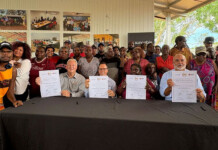Australia’s Li-S Energy says it has substantially improved the performance of its lithium sulfur battery technology, in a new breakthrough.
Li-S Energy has manufactured full size 10Ah semi-solid-state cells delivering an energy density of 498Wh/kg on first discharge, and an industry-leading 456Wh/kg after formation cycling, with the cells continuing to cycle in ongoing testing.
Related article: Li-S Energy launches battery production facility in Victoria
The firm is targeting the rapidly growing markets of drones, defence and electric aviation where weight is critical. For its partners and target customers, the higher energy density means an even lighter battery, further improving potential range, payload and operating time for partner products.
The cells delivering this breakthrough performance incorporate the LIS GEN3 semi-solid-state cell chemistry first announced in April 2023, which the company has continued to enhance and develop.
In September, the company delivered test cells to the first of its key partners to validate performance for aerospace battery packs integrating LIS cells and the new LIS developed intelligent battery management system.
Li-S Energy chief technology officer Dr Steve Rowlands says, “These results represent an important breakthrough for lithium sulfur cell chemistry. Reaching 456Wh/kg from 10Ah cells post formation places LIS at the global forefront of lithium sulfur performance.
“Many R&D institutions and battery start-ups test performance on coin cells or very small pouch cells and publish energy density results from the cell’s first discharge, which is always significantly higher than its practical performance in the field.
Related article: Australia’s first EV battery and charger factory takes shape
“We have taken a far more pragmatic and commercial approach, testing full size 10Ah and 20Ah pouch cells produced on our automated production line and reporting performance after formation cycling, which more faithfully represents the true cell performance when delivered to a customer.”
With its Phase 3 production line now commissioned, the company’s R&D and engineering teams are engaged in continuous production development to further enhance cell reliability, production accuracy and throughput, while its battery integration team is working with current partners on BMS and battery pack design.







